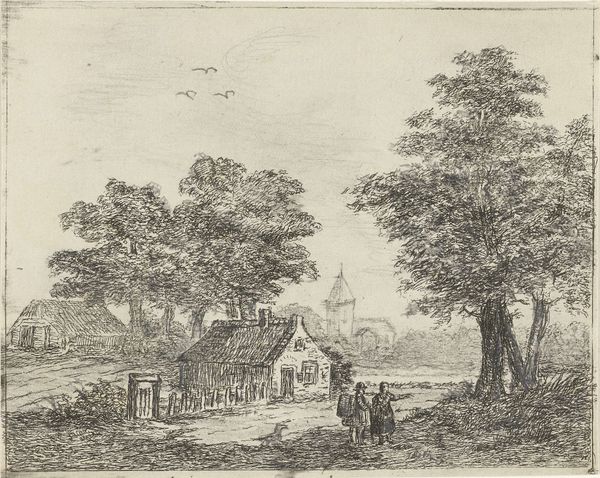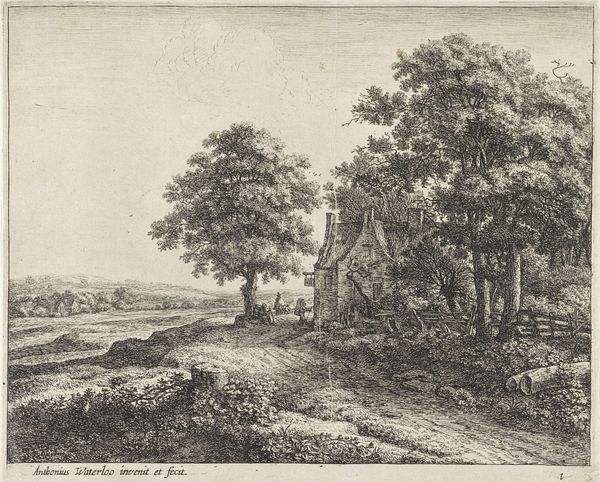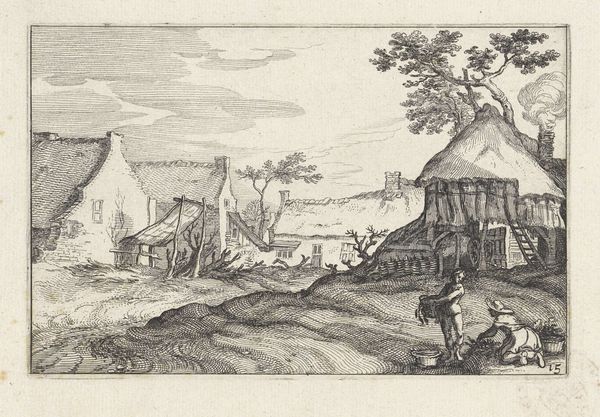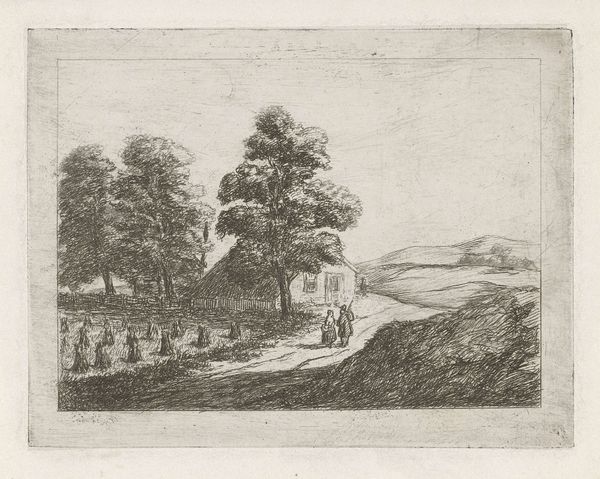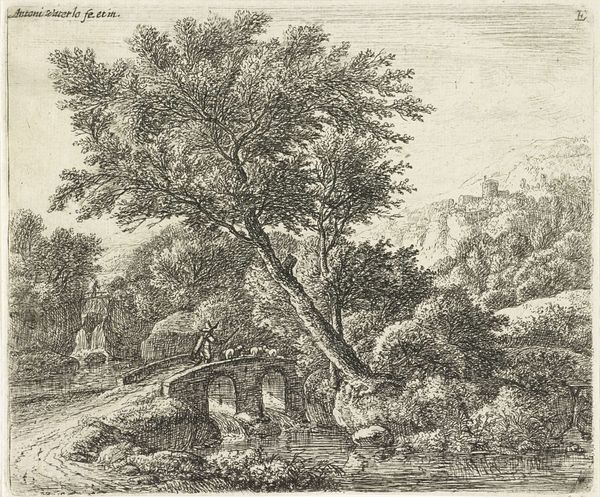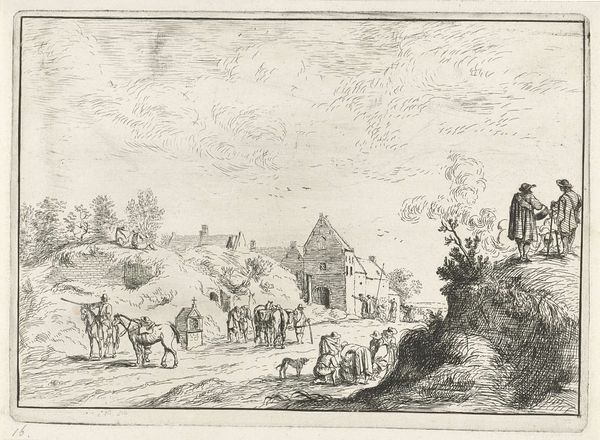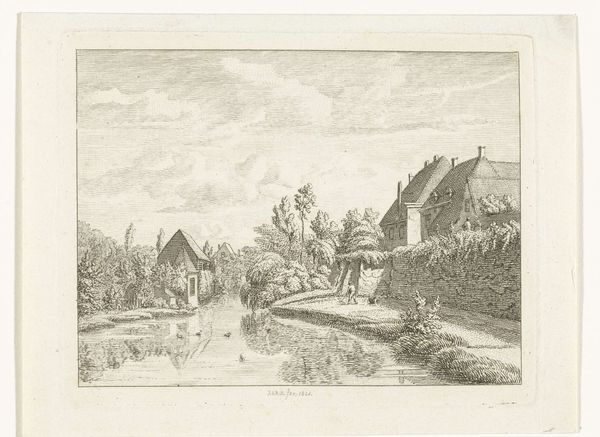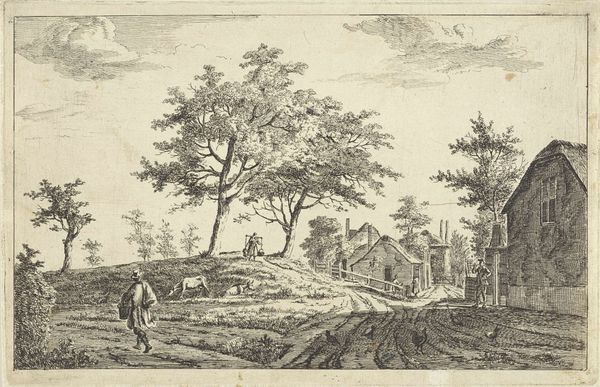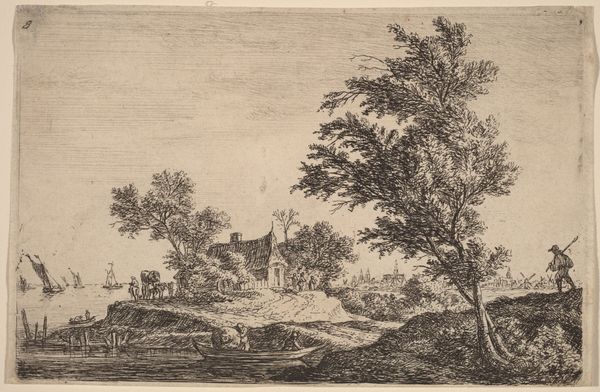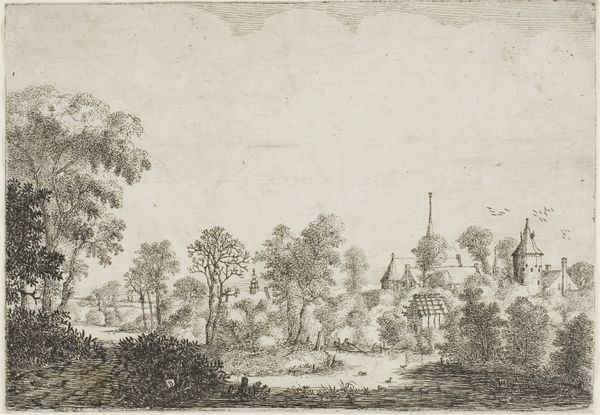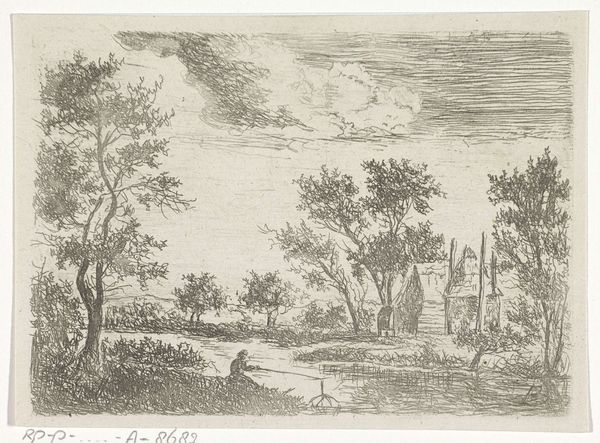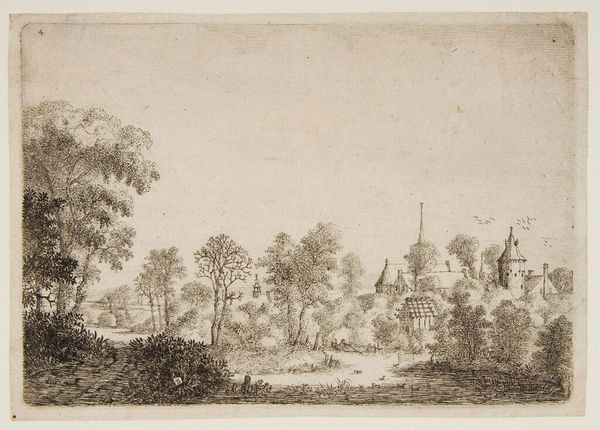
print, etching
#
baroque
# print
#
etching
#
landscape
#
genre-painting
Dimensions: 118 mm (height) x 160 mm (width) (bladmaal)
Curator: "En hyrde med fire køer," or "A Shepherd with Four Cows," is an etching by Jean Baptiste Bonnecroy, made sometime between 1618 and 1676. What do you think when you first look at it? Editor: Well, it definitely feels like a scene steeped in tranquility. A real kind of restful silence almost vibrates off the page. Curator: Bonnecroy really knew how to capture the essence of daily life back then. This etching showcases not just the idyllic countryside but also reflects the prevailing social structures. Think about the labor involved, the rural economy represented. Editor: Absolutely. And look at how Bonnecroy utilizes the etching process; the strategic deployment of lines to define textures, light, and shadow turns a simple pastoral scene into an exquisite meditation on materiality. I’m also intrigued by this very sharp contrast between the heavy, grounded structures and the airy canopy of the large tree, how did he accomplish that with only lines? Curator: Etching allows for incredible detail, doesn't it? The burin practically dances across the plate. To me, that main tree is everything—like a mother protecting a young family. I also read some romantic notions into it as well—a reminder that humanity lives and thrives because of nature, not in spite of it. Editor: I suppose…I am just more concerned about how this contrasts the labor and resource exploitation baked right into the pastoral fantasy: grazing animals, pruned wood—even those lovely textured lines rely on someone else doing the grinding, polishing, and proofing. How many impressions would a plate like this allow until it started to show signs of wear? Curator: Interesting. It's a beautiful way to make the viewers think! A print invites you in to contemplate not only how the art appears on the page but the processes by which everyday life—then, and now—is created. Well, it has certainly given me plenty to mull over. Thank you. Editor: It’s fascinating how, by exploring the techniques used and the underlying social fabric reflected in it, we come to see "A Shepherd with Four Cows" in such fresh light, isn't it?
Comments
No comments
Be the first to comment and join the conversation on the ultimate creative platform.
